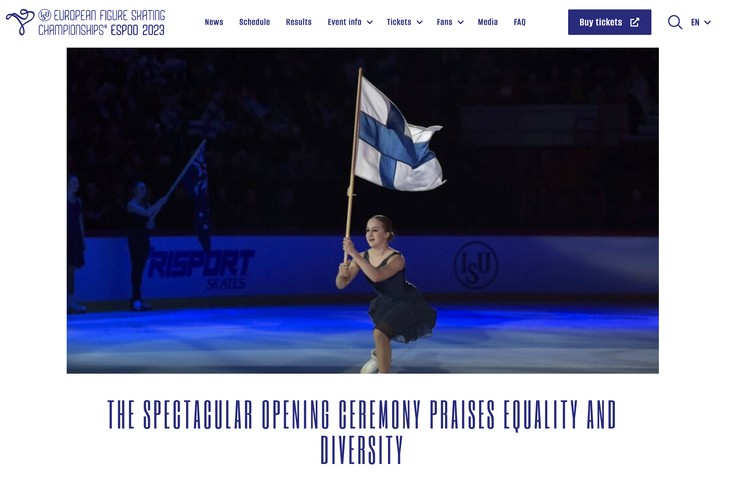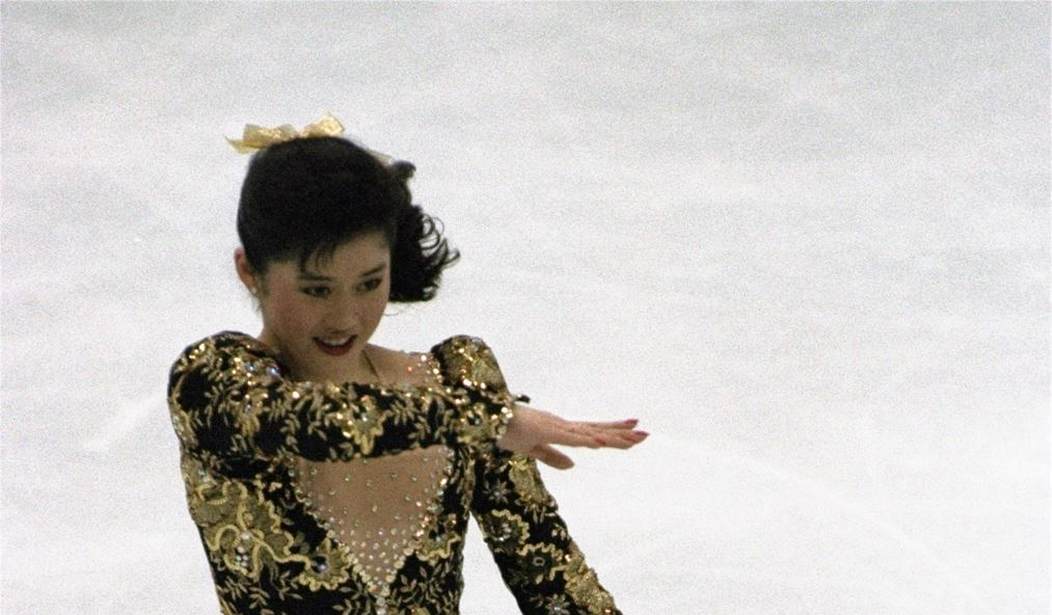Figure skaters, like gymnasts, exhibit incredible skill and athleticism. While men participate in both, it is the women who really shine. If you ask people to remember a skater or gymnast from the Olympics, they will more likely name a woman than a man, despite both genders participating.
Despite this fact, the ISU European Figure Skating Championships® have chosen to showcase a person who is neither a woman nor a man nor a graceful athlete as a symbol for this year’s competition: Minna-Maaria Antikainen, a transgender skater in “her” late 50s.
BREAKING: Finland has introduced the world's first transgender national figure skater
They fall down in the first 45 seconds and no one is allowed to act like anything at all happened pic.twitter.com/12n8ubKZ1c
— Jack Posobiec 🇺🇸 (@JackPosobiec) January 29, 2023
Minna-Maria is not much of a skater, as you can see. Yet she was thrust out onto the ice to embarrass “herself” in order to break gender and physical norms that the skating world has decided are outdated. The European figure skating championships want to emphasize that Diversity, Equity, and Inclusion are at least as important as skill and grace.
What could be more symbolic than putting out a geriatric non-gender specific skater who cannot skate?
The theme of the opening ceremony was “Just be you,” which seems to contradict the spirit of a competition that exists to distinguish between the best and the rest. And, to put it bluntly, to undermine the reason why anybody would want to watch figure skating at all. It’s not like people watch skating to get a glimpse of people who aren’t pleasant to look at, aren’t skilled at their craft, and have the grace of an older gentleman with palsy.
Yet here we are. The sponsors of the championshipin Espoo, Finland, characterized the opening ceremony “spectacular,” and I suppose it is if you think a person making a spectacle of themselves fits that description.

The ISU European Figure Skating Championships® at Espoo Metro Areena will begin on Wednesday, 25 January, with a spectacular opening ceremony drawing its inspiration from the event’s theme, “Just be you”. The Finnish Figure Skating Association promotes the importance of equality and diversity and develops skating according to its values.
The theme, “Just be you”, will be a visible part of the opening ceremony with performers from various backgrounds. The half-hour opening ceremony was designed by synchronized skating coach Helena Tienhaara together with choreographer and coach Beata Leppilampi.
“With the diverse group of performers, we want to show that the ice has space for everyone.”
“The opening ceremony will present skaters at various levels from non-professionals to top athletes. On the ice, we will see Single Skaters, Synchronized Skaters, and Pairs. Included among the performers are Figure Skater Minna-Maaria Antikainen, who defines herself as a gender-neutral woman, adaptive skating performers, and a male synchronized skating team”, Tienhaara said.
“Often, only the top skaters in the country are seen in figure skating shows. With this diverse group of performers, we want to show that the ice has space for everyone. Especially in uncertain and difficult times like these, it is meaningful to create an accepting and positive experience for all”, Leppilampi said.

Finland’s Figure Skating Association is very proud of it’s support for Minna-Maaria, featuring her on their website. I can easily understand why a LGBT+ group might do so as part of a “get out and exercise” campaign promoting healthy activity–such features are common and probably do a tiny bit to promote exercise, although human laziness is a more powerful force than good sense. I am proof of that, being a fat lump who sits on the couch writing posts.
But a figure skating association dedicated to putting on a show? Seems a stretch, to say the least. And actually featuring such a person not for “her” skill but for their symbolic value only serves to piss off skeptics of the transgender movement, not tamp down prejudice. It is proof positive that the goal is not equality but rather obeisance.
The illusion of lightness born of figure skating was initially lost, as was the control of the body. Antikainen, who had been pacing between the points of the field, did not move forward much, and especially not backwards. Sweat dripped, but the blade did not obey. As the movement language required for skating and the variations in weight transfer slowly began to take shape, Antikainen realized that he needed a coach for himself in order to get on with the hustle and bustle.
He would be looking for demanding and open-minded coaches alongside him, whose faith would not be lost even if his own development stopped for a while. Former figure skating competition representative Elise Luovula (née Ahonen) and Viivi Hyttinen, who leads the adult skating team in Joensuu, saw in Antikainen the fire and perseverance needed for learning, which at first were much more than skill. Thanks to the coaches, the hobby expanded even further.
Professional coaches apparently flocked to teach “her,” and you can guess the reason–and it’s not that “she” will be a champion. Yet she puts on shows nonetheless.

Over the years, the program repertoires have included many characters and stories important to the skater, such as the Fenix bird, raised from the ashes to new life and splendor, the Egyptian princess Nefertiti, known for her beauty, and the Geisha, tired of serving others. In the latter role, the costume was designed in such a way that it was transformed in the middle of the program from a traditional geisha kimono to a bold little black, with another thousand stones glittering like a sea of light. One of his dreams came true was the Finlandia programme to celebrate Finland’s 100th anniversary, in which he embodied the reconstruction of the country in a blue-and-white outfit accompanied by the robust tunes of Jean Sibelius.
Antikainen remembers the first with special warmth a self-made program theme about the battle princess Xena.
“I wanted to play the role of a really strong woman, which is why I chose the warrior Xena. The performance outfit sewn by my skating buddy was almost a perfect replica of the original with rivets and leather boots. Small difficulties were caused by the huge cups at the site of the chest armor, with which it was difficult for the unaccustomed to skate at first, he laughs heartily.
Finland is also doing its best to promote other forms of body positivity, so expect to see obese skaters taking the ice, because this breaks the stodgy image and rules that have dominated figure skating in the modern era.
No doubt people will flock to see the newly diverse skating teams that will surely follow, because nothing entertains more than seeing people embarrass themselves. Putting on a show of skaters who–literally–cannot get back up after falling on the ice should revitalize the sport, bringing a new audience of non-skaters to the shows. Or not.
It all reminds me of Kurt Vonnegut’s Harrison Bergeron, where the socialist value of equality replaces all other values, especially grace and exceptionalism.
This is an inversion of values that Nietzsche predicted–the celebration of underachievement, where greatness itself has become anathema to society.
What, exactly, is the point of having a competition if skill is taken out of the occasion? Perhaps they should skip the whole spectacle and simply go to the awards ceremony, where the next “hero” can be crowned. It seems as if society exists solely to flatter “marginalized” groups.
Dante apparently failed to warn us of this level of hell: Wokeland. Abandon all hope ye who enter here.








Join the conversation as a VIP Member